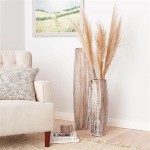How to Decorate a Rustic Style House
Rustic style, in interior design, emphasizes natural, raw, and unrefined elements to create a warm and inviting atmosphere. It draws inspiration from nature, incorporating materials like wood, stone, and metal in their most authentic forms. The aesthetic often evokes a sense of comfort, simplicity, and connection to the outdoors. Achieving a successful rustic design requires a careful balance of textures, colors, and functional pieces that contribute to a cohesive and visually appealing space. It is a diverse style, encompassing various sub-genres based on geographic location or design preferences, such as farmhouse rustic, mountain rustic, and coastal rustic. Understanding the core principles of rustic design is crucial for homeowners seeking to transform their living spaces into havens of natural beauty and unpretentious elegance.
Choosing the right materials is paramount to establishing a genuine rustic ambiance. Opting for reclaimed wood, whether for flooring, furniture, or accent walls, introduces character and history to the space. Its imperfections, such as knots, grains, and weathering marks, tell a story and contribute to the organic feel. Stone, another fundamental element, can be incorporated through fireplaces, accent walls, or even decorative stone elements. Textured fabrics like burlap, linen, and wool add warmth and tactile appeal. Utilizing natural metal accents, such as wrought iron or copper, complements the overall aesthetic, providing a contrast to the softer textures of wood and fabric. These materials, when combined thoughtfully, create a layered and visually rich environment that is characteristic of rustic design.
Selecting the Right Color Palette
The color palette for a rustic style house should predominantly consist of natural and earthy tones. Neutral colors such as beige, cream, and gray form a versatile foundation, allowing natural materials to take center stage. Accents of muted greens, browns, and reds, inspired by the outdoors, can add depth and interest. Avoid overly vibrant or artificial colors, as they can detract from the organic and unrefined nature of the style. Consider incorporating colors found in natural elements like wood, stone, and foliage. For example, warm wood tones can be complemented by earthy greens and soft browns to create a harmonious and inviting atmosphere. The key is to maintain a sense of balance and cohesion within the color scheme, ensuring that it aligns with the overall rustic aesthetic.
Lighting plays a significant role in shaping the atmosphere of a rustic space. Soft, warm lighting is essential for creating a cozy and inviting feel. Opt for fixtures that complement the natural materials and muted colors of the design. Wrought iron chandeliers, pendant lights with Edison bulbs, and table lamps with linen shades are excellent choices. Natural light should also be maximized to highlight the textures and colors within the space. Consider using sheer curtains or blinds to filter sunlight and maintain privacy without blocking out natural illumination completely. Layering different types of lighting, such as ambient, task, and accent lighting, can add depth and dimension to the room, allowing for adjustments to the mood and functionality of the space.
Furniture in a rustic style house should prioritize comfort, functionality, and durability. Pieces crafted from solid wood, particularly those with visible grain and imperfections, are ideal. Upholstered furniture should feature natural fabrics like linen, cotton, or leather. Avoid overly ornate or modern designs, opting instead for simpler, more timeless silhouettes. Consider incorporating antique or vintage pieces to add character and a sense of history to the space. Distressed finishes and natural materials, such as woven baskets or wooden crates, can be used for storage. The furniture should be arranged to promote conversation and relaxation, creating a comfortable and inviting environment for both residents and guests.
Incorporating Natural Elements and Textures
Bringing the outdoors in is a fundamental aspect of rustic design. Natural elements can be incorporated through various means, such as displaying potted plants, arranging branches or twigs in vases, or using natural stone as decorative accents. Textures play a crucial role in adding depth and visual interest to the space. Combining rough and smooth textures, such as pairing a rough wooden table with smooth linen upholstery, creates a tactile and visually appealing contrast. Other textural elements, such as woven rugs, knitted throws, and faux fur pillows, contribute to the overall warmth and comfort of the room. Consider incorporating natural materials like pinecones, antlers (ethically sourced or faux), or driftwood into the décor. These elements not only enhance the rustic aesthetic but also provide a connection to nature.
Accessories and décor should complement the overall rustic theme, reinforcing the natural and unrefined aesthetic. Consider incorporating antique or vintage items, such as old tools, metal signs, or pottery, to add character and a sense of history. Textiles with natural patterns, such as plaids, stripes, or floral motifs, can be used for curtains, pillows, and throws. Woven baskets, wooden bowls, and earthenware vases are practical and decorative storage solutions. Avoid overly modern or minimalist accessories, opting instead for items that reflect a more traditional and handcrafted feel. The key is to choose accessories that are both functional and visually appealing, contributing to the overall warmth and charm of the rustic style.
When decorating a rustic style house, it is essential to maintain a balance between simplicity and sophistication. Avoid cluttering the space with too many accessories or overly ornate decorations. Focus on creating a clean and uncluttered environment that allows the natural materials and textures to shine. Thoughtful placement of furniture and accessories is crucial for creating a functional and visually appealing space. Consider the flow of traffic and the overall layout of the room when arranging furniture. Use accessories to add pops of color and personality without overwhelming the space. The goal is to create a comfortable and inviting atmosphere that reflects the simplicity and beauty of nature.
Creating a Focal Point
Establishing a focal point within each room helps to create a sense of order and visual interest. A fireplace, a large window with a scenic view, or a statement piece of furniture can serve as a focal point. Once a focal point is identified, the rest of the room can be designed around it, ensuring that all elements complement and enhance the central feature. For example, in a living room with a fireplace as the focal point, furniture can be arranged to face the fireplace, and accessories can be chosen to complement its style and materials. In a bedroom, a large window with a view can be accentuated with appropriate window treatments and furniture placement. The focal point should draw the eye and create a sense of balance within the room.
Personalization is an important aspect of creating a rustic style house that reflects the homeowner's individual taste and preferences. While adhering to the core principles of rustic design, it is essential to incorporate personal touches that make the space feel unique and inviting. This can be achieved through the display of personal collections, family heirlooms, or artwork that reflects the homeowner's interests and experiences. Consider incorporating elements that reflect the local environment or history, such as regional crafts or artwork. Personalization adds warmth and character to the space, making it feel more like a home and less like a generic design template. The key is to strike a balance between personal expression and adherence to the overall rustic aesthetic.
Maintaining a rustic style house requires regular cleaning and upkeep to preserve its natural materials and textures. Dusting regularly is essential for preventing the buildup of dirt and grime on wooden surfaces and other natural materials. Cleaning upholstered furniture with appropriate cleaning solutions helps to maintain its color and texture. Polishing metal accents prevents tarnishing and maintains their shine. Regular maintenance of fireplaces, such as cleaning the chimney and inspecting the firebox, is crucial for safety. By following a regular cleaning and maintenance schedule, homeowners can ensure that their rustic style house remains beautiful and inviting for years to come. Addressing any minor repairs promptly can prevent further damage and maintain the structural integrity of the house.

Rustic Interior Design How To Get A No Fuss Natural Look Decorilla

10 Tips For Creating A Rustic Home Décor Look

What Is Rustic Design And How Can I Use It In My Home By Modern Handcrafted Furniture

48 Rustic Living Room Ideas For A Cozy Inviting Family Space

32 Best Rustic Interior Design Ideas In 2025 Decorilla

48 Rustic Living Room Ideas For A Cozy Inviting Family Space

Rustic Decor Style Enlighting Your Mid Century Living Room Ambience

48 Rustic Living Room Ideas For A Cozy Inviting Family Space

How To Brighten Up A Rustic Home Bunch Interior Design Ideas

5 Ways To Design A Country Style Home Carlisle Wide Plank Floors
Related Posts







